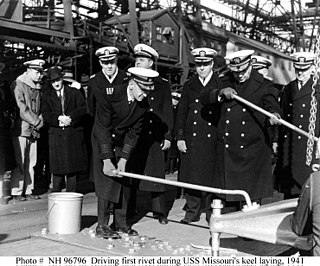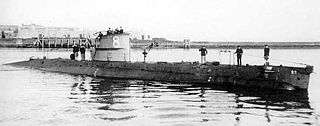| History | |
|---|---|
| Name: | U-D4 |
| Builder: | Rotterdamsche Droogdok Maatschappij , Rotterdam |
| Laid down: | 20 April 1939 |
| Launched: | 23 Novovember 1940 |
| Commissioned: | 28 January 1941 |
| Decommissioned: | 19 March 1945 |
| Fate: | Scuttled 3 May 1945 |
| General characteristics [1] | |
| Class and type: | O 21-class submarine |
| Displacement: |
|
| Length: | 77.70 m (254 ft 11 in) |
| Beam: | 6.80 m (22 ft 4 in) |
| Draught: | 3.95 m (13 ft 0 in) |
| Propulsion: |
|
| Range: | |
| Complement: | 39 |
| Armament: |
|
U-D4 was an O 21-class submarine. The boat was laid down as the Dutch submarine K XXVI and renamed O 26 but was captured during German invasion of the Netherlands in World War II and commissioned in the Kriegsmarine.

The O 21 class was a class of seven submarines, built for the Royal Netherlands Navy. The ships were still incomplete at the start of the German invasion of the Netherlands O 21, O 22, O 23 and O 24 were hastily launched and escaped to the United Kingdom. O 25, O 26 and O 27 were not able to escape and were captured by the German forces. The Kriegsmarine ordered the completion of the ships and they entered German service as UD-3, UD-4 and UD-5. The submarines diving depth was 100 metres (330 ft).

A submarine is a watercraft capable of independent operation underwater. It differs from a submersible, which has more limited underwater capability. The term most commonly refers to a large, crewed vessel. It is also sometimes used historically or colloquially to refer to remotely operated vehicles and robots, as well as medium-sized or smaller vessels, such as the midget submarine and the wet sub. The noun submarine evolved as a shortened form of submarine boat; by naval tradition, submarines are usually referred to as "boats" rather than as "ships", regardless of their size.

Laying the keel or laying down is the formal recognition of the start of a ship's construction. It is often marked with a ceremony attended by dignitaries from the shipbuilding company and the ultimate owners of the ship.








